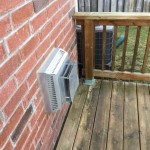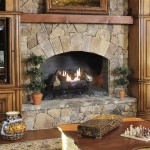Understanding and Selecting an Insert Fireplace Gas
An insert fireplace gas unit provides a convenient and efficient heating solution for existing masonry fireplaces. Replacing an open wood-burning fireplace with a gas insert offers numerous advantages, including increased heating efficiency, reduced air pollution, and simplified operation. This article aims to provide a comprehensive understanding of gas fireplace inserts, covering their functionality, types, key features, installation considerations, and maintenance requirements.
A gas insert fireplace is a self-contained unit designed to fit directly into the opening of an existing fireplace. It utilizes natural gas or propane as fuel to generate heat, distributing it effectively into the room. Unlike traditional fireplaces, gas inserts are sealed units, preventing significant heat loss up the chimney. This results in a marked improvement in heating efficiency, often exceeding 70%, compared to the single-digit efficiency of a conventional open fireplace.
The operation of a gas insert is relatively straightforward. Gas is supplied to the burner via a gas line, and the combustion process generates heat. The heat is then distributed into the room through various mechanisms, such as convection, radiation, or a combination of both. Most gas inserts incorporate a blower system to circulate warm air more effectively, enhancing their heating capabilities. A control panel, often including a remote control, allows users to adjust the flame height, blower speed, and temperature settings, providing precise control over the heating output.
Key Benefits of Choosing a Gas Fireplace Insert
One of the primary advantages of a gas fireplace insert is its enhanced energy efficiency. Open fireplaces are notoriously inefficient, losing a significant portion of the generated heat up the chimney. Gas inserts, by contrast, are designed to retain heat and distribute it effectively into the room. This translates to lower energy bills and a reduced environmental impact.
Convenience is another significant benefit. Gas inserts eliminate the need for sourcing, storing, and tending to firewood. Ignition is typically achieved at the push of a button, and the flame height and heat output can be easily adjusted. This makes gas inserts a more practical and user-friendly heating option compared to traditional wood-burning fireplaces.
Furthermore, gas inserts contribute to improved indoor air quality. Wood-burning fireplaces release smoke, particulate matter, and other pollutants into the air, which can negatively impact respiratory health. Gas inserts, when properly installed and maintained, produce significantly fewer emissions, resulting in a cleaner and healthier indoor environment. The sealed design also prevents drafts and odors associated with traditional fireplaces.
Types of Gas Fireplace Inserts
Gas fireplace inserts are generally categorized into two main types based on their fuel source: natural gas inserts and propane inserts. Natural gas inserts utilize natural gas supplied through a pipeline, while propane inserts use liquid propane gas (LPG) stored in a tank. The choice between the two depends largely on the availability of a natural gas connection and personal preferences.
Natural gas inserts are often preferred when a natural gas line is readily accessible, as they offer a continuous and relatively inexpensive fuel source. Propane inserts, on the other hand, provide greater flexibility in terms of location, as they do not require a connection to a natural gas pipeline. However, propane tanks need to be refilled periodically, and the cost of propane may be higher than that of natural gas in some areas.
Beyond the fuel type, gas inserts can also be differentiated based on their design and features. Direct vent inserts, for example, are sealed combustion systems that draw combustion air from outside the home and vent exhaust gases directly outdoors. This design minimizes the risk of carbon monoxide poisoning and ensures optimal combustion efficiency. Vent-free inserts, on the other hand, do not require venting and rely on room air for combustion. These models are typically equipped with oxygen depletion sensors (ODS) to shut off the gas supply if oxygen levels in the room become too low.
Factors to Consider When Selecting a Gas Fireplace Insert
Several factors should be carefully considered when selecting a gas fireplace insert to ensure that it meets the specific needs and preferences of the homeowner. The size of the fireplace opening is a crucial consideration, as the insert must fit properly within the existing masonry structure. Accurate measurements of the width, height, and depth of the fireplace opening are essential for selecting an appropriately sized insert.
The heating capacity of the insert should also be taken into account. This is typically measured in British thermal units (BTUs), which represent the amount of heat the insert can generate per hour. The appropriate BTU rating will depend on the size of the room to be heated and the insulation levels of the home. A larger room or a poorly insulated home will require an insert with a higher BTU rating.
The aesthetic appeal of the insert is another important consideration. Gas inserts are available in a wide range of styles, finishes, and designs, allowing homeowners to choose an option that complements their existing décor. Some inserts feature realistic-looking artificial logs, while others offer a more contemporary and minimalist aesthetic. The type of flame presentation and the visibility of the firebox are also important factors to consider.
Additional features, such as remote control operation, thermostatic control, and blower systems, can enhance the convenience and functionality of a gas insert. Remote controls allow users to adjust the flame height and temperature settings from the comfort of their couch, while thermostatic controls maintain a consistent room temperature. Blower systems circulate warm air more effectively, improving the heating performance of the insert. It is also wise to consider models with safety features such as automatic shut-off valves and child safety locks.
The type of venting system required for the insert is another critical consideration. Direct vent inserts require a specialized venting system that extends to the exterior of the building, while vent-free inserts do not require venting. The type of venting system will impact the installation cost and complexity, as well as the location options for the insert. Consulting with a qualified HVAC professional is essential for determining the appropriate venting system for a particular installation.
The cost of the insert, including the purchase price, installation fees, and ongoing fuel costs, should be carefully evaluated. Gas inserts can range in price from a few hundred dollars to several thousand dollars, depending on their size, features, and brand. Installation costs can also vary significantly depending on the complexity of the installation and the location of the fireplace. Fuel costs will depend on the type of fuel used (natural gas or propane) and the usage habits of the homeowner.
Finally, it is important to research the reputation and reliability of the manufacturer. Choosing a reputable brand with a proven track record of quality and customer service can help ensure a long-lasting and trouble-free experience. Reading online reviews and seeking recommendations from trusted sources can provide valuable insights into the performance and reliability of different gas insert models.
Installing a gas fireplace insert requires specialized knowledge and skills. It is crucial to hire a qualified and licensed HVAC professional or a gas fireplace installer to ensure that the installation is performed safely and in accordance with local building codes. Improper installation can result in gas leaks, carbon monoxide poisoning, and other serious hazards.
The installation process typically involves preparing the fireplace opening, running a gas line to the insert, installing the venting system (if required), and connecting the insert to the gas supply. The installer will also test the insert to ensure that it is functioning properly and safely. It is important to obtain all necessary permits and approvals from local authorities before commencing the installation.
Regular maintenance is essential to ensure the safe and efficient operation of a gas fireplace insert. This typically includes cleaning the burner and pilot assembly, inspecting the venting system for obstructions, and checking the gas connections for leaks. A qualified HVAC professional should perform a thorough inspection and cleaning of the insert at least once a year.
Homeowners should also be aware of the symptoms of carbon monoxide poisoning, which can include headaches, dizziness, nausea, and shortness of breath. If any of these symptoms are present, it is important to evacuate the premises immediately and seek medical attention. Carbon monoxide detectors should be installed in the home to provide early warning of potentially dangerous carbon monoxide levels.

Nfi Certified Gas Fireplace Insert Installations Buffalo Rochester Ny

Gas Fireplace Inserts Napoleon Fireplaces

Majestic 25 Inch Ruby Direct Vent Gas Fireplace Insert

Belmont Small Gas Insert
How To Install Gas Fireplace Insert Heat Glo

Fireplace Insert Guide Fireplaces Direct Learning Center

Gas Fireplace Insert Propane Regency Vermont Castings Napoleon

Mendota Luxury Gas Fireplaces Inserts

Enviro E Series Gas Or Propane Insert Fireplace Fireplaces By Cameron

Gas Fireplaces Inserts And Stoves N Fixin S
Related Posts








